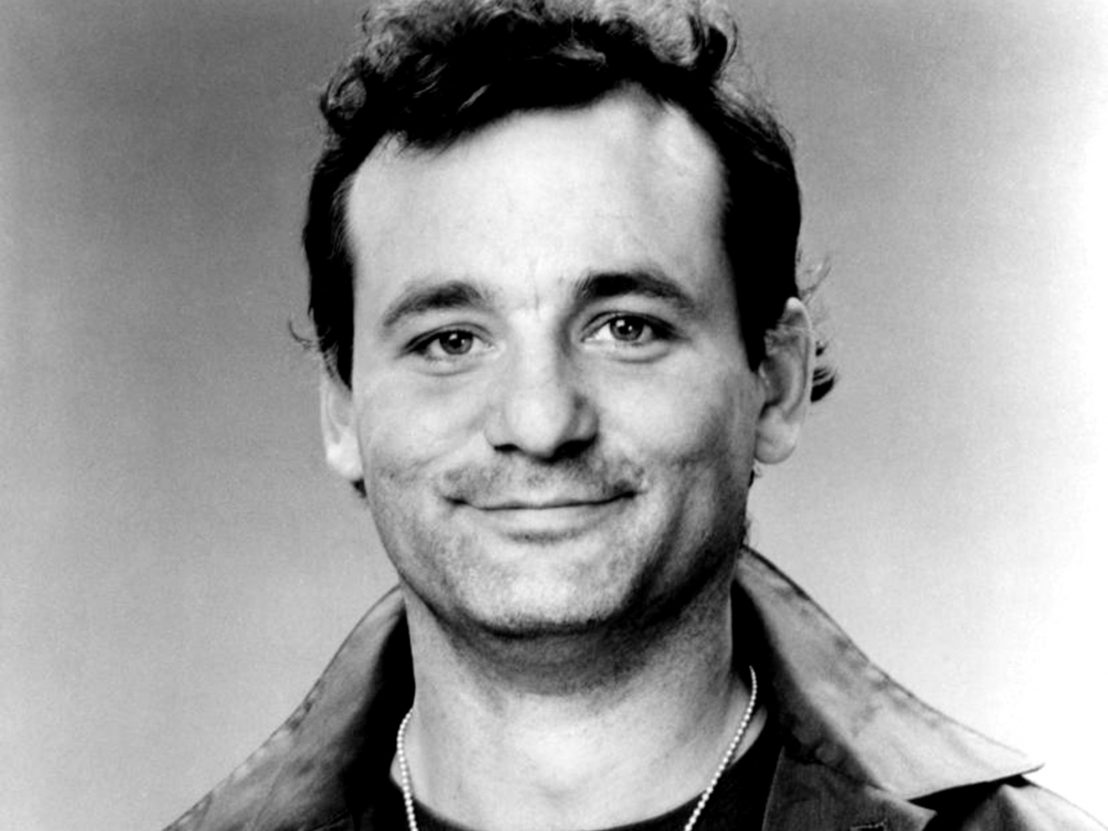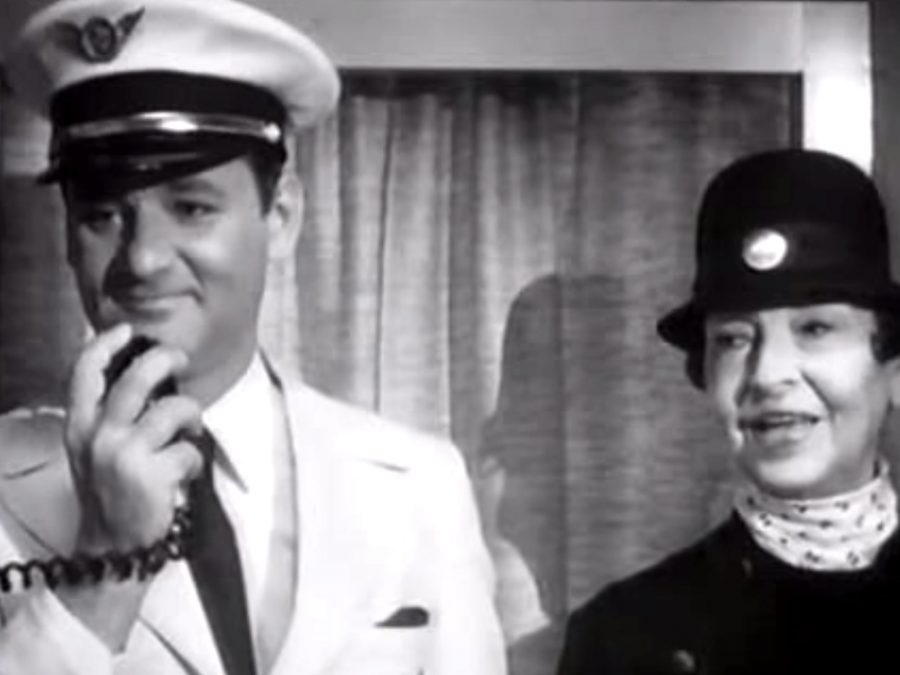
In April 2004, Bill Murray was honoured by the Brooklyn Academy of Music with a career retrospective for which he was asked to pick a sample of his best-loved movies and a few personal favourites. Sofia Coppola warmly introduced Lost in Translation, while Ghostbusters and the clown-based 1990 crime caper Quick Change screened adjacently. Murray also insisted that BAM show another, lesser-known work, 1984’s Nothing Lasts Forever. Eyebrows were raised. No one in the audience that night knew quite what to expect; very few people had even so much as heard the film’s title before, let alone were familiar enough to place it in the Murray canon. And with good reason: it had never been shown publicly, its fate sealed 20 years earlier when MGM decided to shelve it indefinitely following a disastrous test screening in Seattle.
Initially the odds were heavily stacked in the film’s favour. Nothing Lasts Forever was written and directed by a talented young SNL staffer named Tom Schiller, whose ambitious, genre-bending script came approved by Lorne Michaels and SNL alumni Murray, Dan Aykroyd and John Belushi, who joined the project as producer and cast respectively. Schiller already had a good feel for black comedy, as seen in a series of popular skits for SNL that included ‘Don’t Look Back in Anger’, in which Belushi, depicted as the last living ‘Not Ready for Primetime Player’, gleefully dances on the graves of his deceased cast members. Yet what was supposed to be Schiller’s breakthrough feature ended up being the first nail in the coffin of a hugely promising career.
Over the last decade or so, Nothing Lasts Forever has built up a fervent cult following, but owing to ongoing legal complications which are far too dry and wearisome to get into here, it remains for the most part unseen, with no theatrical or home video release in sight. Now, however, the film has resurfaced, sparking a renewed interest in a forgotten mid-’80s curio hailed as a “lost comedic masterpiece” by the New Yorker’s Richard Brody. On Sunday 4 December, London’s Prince Charles Cinema will host an extremely rare 35mm screening of the film with a Zach Galligan Q&A, Murray’s then 18-year-old co-star who is best known for playing Billy Peltzer in Joe Dante’s Gremlins movies.
We recently reached out to Galligan to see if he could provide any deeper insight into the film. “I remember the whole thing like it was yesterday,” he beams with the kind of giddy exuberance that only comes when recalling an especially fond period in one’s life. “It was my first experience on a movie set; I had just turned 18, still in high school – believe it or not I actually got credit for doing it as my senior project – so it was a really big deal for me. It would have been an even more incredible experience had John Belushi not just died. Lorne Michaels had cast John in a fairly decent part, and I was so excited to be working with him and the rest of the gang. Belushi was not just one of the ‘Not Ready for Prime Time Players’ along with guys like Aykroyd and Murray, he was one of their best friends.”
Today it’s easy to think of Aykroyd without thinking of Belushi, but back in the early ’80s it would have been impossible. They were the Blues Brothers, America’s daring, darling comedy duo. Indeed, Galligan remembers how Belushi’s absence cast an understandably sombre mood over the entire production when filming began in April of ’82, just a month after his death. “Here I am, this 18-year-old kid who thinks he’s going to be part of this Saturday Night Live party, and really it was more like a funeral.”

Murray too was deeply affected by the loss of his close pal and longtime collaborator, his grief seemingly manifesting in what Galligan describes as an uneasy on-set relationship between him and his boyhood hero. “The way that Bill and I interacted… how do I put this… I would describe Bill Murray at that time, at least towards me, as deliberately insulting, condescending, dismissive, antagonistic. He was clearly going through a difficult time personally; I actually just recently spoke to an actor who had worked with him on Tootsie, which Murray was shooting at the exact same time as Nothing Lasts Forever, and they told me he was very difficult to work with then as well.
“The explanation I’ve arrived at after all this time is, because we played nemesis in the movie, he thought that I would be completely in awe of him and so he behaved in a way which would counteract that. And it worked; I thought he was kind of a dick a lot of the time. But what he would then do is he would alternate between being really dismissive and nasty to me, and being really cheery and sunny and nice to me. He used to do this thing on SNL where he would dish out noogies, and every now and then we would be on set and he would give me a noogie. I remember him once saying, ‘Get outta here ya incandescent knucklehead!’ To this day I don’t know what he meant by ‘incandescent’, but then that was Bill.
Despite Murray blowing hot and cold for much of the film’s production, Galligan cherishes the memory of their brief time together. He expresses only mild regret that they didn’t keep in touch, but then that’s never really been Bill Murray’s style; he famously ditched his PR for an automated phone line, and even his oldest friends find it almost impossible to reach him. They did run into each other once though, about a year after making Nothing Lasts Forever. As Galligan tells it: “After I shot Gremlins I went back to Columbia University in the fall of ’83 for the first semester of my sophomore year. I’m walking across the campus and out of the corner of my eye I spot this white hearse with what looks like Murray and Aykroyd stood next to it in these strange grey outfits with these big guns. There were all these police barricades around it, and hundreds of kids watching. So I wander over, I think what the hell, I know them, I’ll give it a shot. Most of the kids were clustered around the barricades, and Murray was doing his thing, performing for the crowd.
“After a while I plucked up the courage and I shouted, ‘Hey! Danny, Billy!’ – because that’s how I knew them – and in the most Bill Murray-ish way that you can imagine, Bill looks over at me and says, ‘He-hey! It’s the kid. What are you doing here young man?’ So I duck under the barricade and make my way over to the car, and Bill, Dan and I chat for around 10 or 15 minutes. Eventually Ivan Reitman comes over and goes, ‘Okay guys, let’s get back to work,’ so we hug it out and say goodbye and I turn and start walking away back towards the crowd. I’ll never forget the expressions on the other kids’ faces when I looked up. I ducked back under the barricade and I swear to God, the entire crowd parted and I just smiled and made my way to class. Sometimes real life is just as good as the movies.”
Nothing Lasts Forever is screening at London’s Prince Charles Cinema on Sunday 4 December with a Zach Galligan Q&A. Book tickets at princecharlescinema.com
Published 1 Dec 2016

The longtime collaborators will team up on a stop-motion animation in the vein of Fantastic Mr Fox.

By Timba Smits
LWLies’ artistic director, Timba Smits, discusses the fine art of drawing portraits ahead of his new solo show, Role Models.

From Bottle Rocket to The Grand Budapest Hotel, we rank the American director’s nine features.